Reasons for Dense Dough
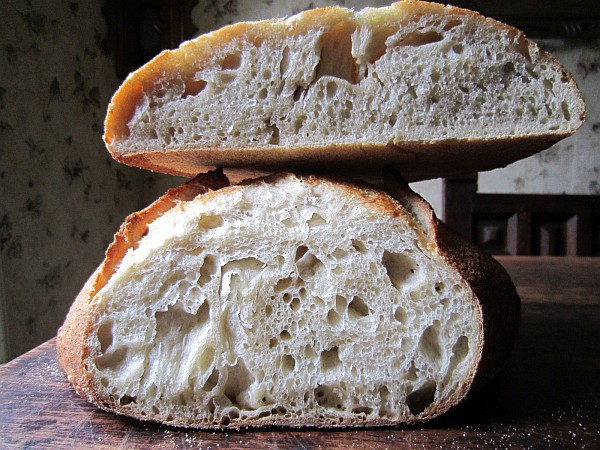

Some reasons why your bread might be dense:
- The starter was not vigorous enough, you need a lot of nice vigorous yeast to make a lofty bread. Feed your starter more often or with a higher ratio of feed.
- Using a high percentage of depleted starter in a dough will obviously cause it to be denser. Bakers think, well it will be the same as feeding the starter to just make a dough, but the truth is, not only is there a low amount of vigorous yeast, but there is a high amount of gluten that has already broken down and is slack/weak. You can’t recover from a weakened gluten. Use spent starter in baked goods where lower protein (weaker flour) is used, like pancakes, muffins, pastry, cakes, etc.
- However spent starter can be used as a weakening agent, much like an autolyse, where is it used to help a strong dough to be more extensible. If you use a spent starter you usually need to figure a lower hydration for your dough (since the dough will be more slack. However a drawback can be that the dough tends to dry out quicker after being baked.
- Using liquid that was too hot which killed the yeast. Keep any liquid under 115F/46C
- Using tap water (in some areas), which may interfere with your starter and your dough (because of chemicals).
- Not refreshing your starter properly if you’ve kept it refrigerated. You might need a few feeding to get it going, especially if you haven’t used it for a while.
- The dough was under or over proofed. This is the most common reason for dense bread because it can be hard at first to determine when dough is ready to bake. But both under and over fermenting can cause dense bread.
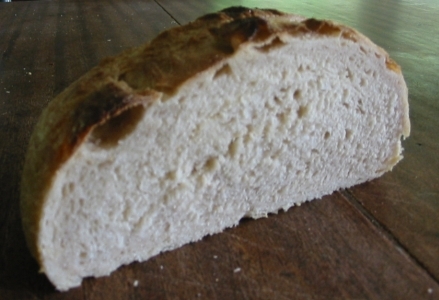
- The flour used is low in gluten or a weak flour. Often organic and generic flour can have problems with gluten amounts and also balanced enzymes for good crust color and fermentation activity.
- Oven and stone not hot enough. Your initial oven spring comes in the first ten minutes of baking. Many bakers are hesitant to pre-heat thoroughly because of costs, but then the whole bake is a waste and disappointing because of poor oven spring and a dense loaf.
- Too much extra flour worked into the dough while folding and/or shaping can cause dense bread.
- Over mixing can cause a dense loaf by the weakening and breakdown of the gluten (not likely to happen if you fold dough or hand knead).
- The flour you used is a whole grain with coarse bits of bran and grain in it. Whole grain breads are expected to be denser because of the cutting of the gluten from the sharp bits of coarse grain but also if you over ferment and roughly handle a whole grain dough, it will be even more dense. Handle a whole grain dough more gently than an all white dough and make sure not to over ferment it, especially if the dough is very warm.
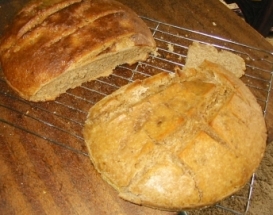
- Rough or heavy shaping can cause a loaf to be a bit denser than it would have been otherwise.
- Using ingredients with live enzymes, like pineapple, mango, fig, papaya, diastatic malt, sprouted flours etc These types of ingredients can break down proteins (gluten) and your dough will weaken, sometimes irreparably.
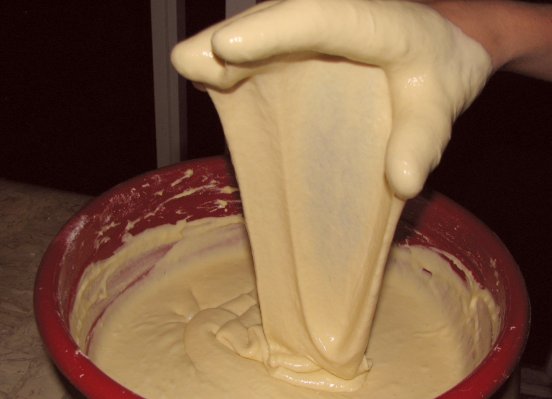
Dough ruined by using Papaya pulp.
- Adding too much sugar,honey, salt, diastatic malt, spices, milk, fats, juices, etc many of these ingredients will inhibit or interfere with the yeast activity and might greatly slow down fermentation.
- Too many added nuts, dried fruits, herbs, seeds, etc These types of ingredients not only weigh the loaf down, but can cut into the gluten strands, further weakening the dough.
- Not developing the dough enough can cause a dense loaf. If you wish to have a short one day ferment, you need to work more on developing the gluten, either by kneading, folding or mixing more. If your gluten is not developed and you can’t even pull a windowpane, expect a dense loaf with poor oven spring.
If any more causes of dense bread occur to me, I will add them. If you have any suggestions, please leave a comment below.
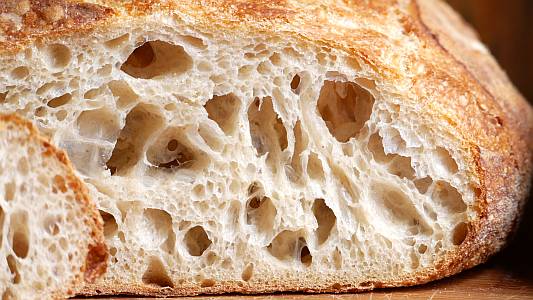
Bread that is not dense.

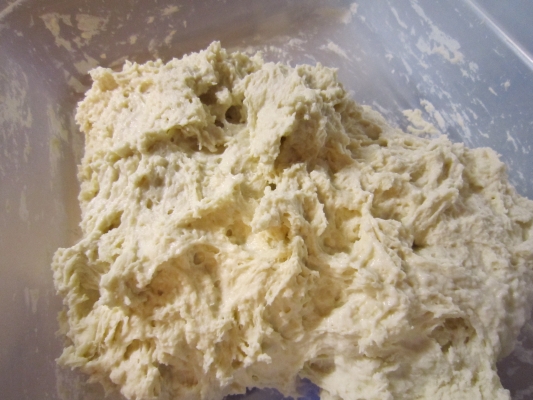
It would be so helpful if you could post more photos of bread failures and likely causes for each. Like what happened when the interior looks like a cave of stalagmites and stalactites? Or there is a dense bottom inch or two and the rest is an enormous hole? Thanks!
Hi Valerie, that sounds as if you are bulk fermenting too long. Try doing a shorter first rise (bulk ferment) and save the dough’s strength for later during the final rise.
Thanks, I’ll try that on my next loaf.
I amorally having trouble telling when my bread is proofed correctly. When the dough is first rising it is fine but once it is shaped in the banneton there is very little further rise.